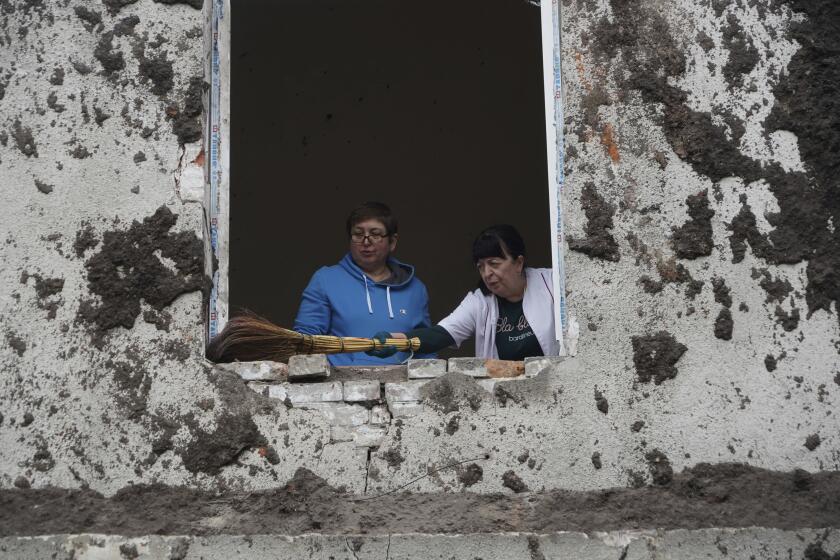After occupation, Oregon’s Malheur wildlife refuge is returning to ‘a new normal’
You can count coots again. Sandhill cranes, too.
You can drive the main refuge road without worrying that somebody with a gun — either an anti-federal militant or an FBI agent — will stop you. You can even walk into the Harney County Courthouse without having to go through a metal detector.
Less than three months after the end of the 41-day armed occupation that made this remote part of eastern Oregon a symbol of tension between the rural West and the federal government, a very welcome spring has arrived. The occupiers are mostly in jail, the Malheur wildlife refuge is mostly open, and the birds — and birders — are back.
“Maybe I’ll see a tundra swan,” said a bashful man with binoculars walking on a golden evening alongside the refuge’s Benson Pond. “But any birds will do.”

Yet as good as it all feels to many people, virtually no one says they expect things to return to the normal they used to know.
“We will not go back to exactly the way it was before,” said Chad Karges, the longtime manager of the refuge. “It will be a new normal.”
For refuge employees, that means ongoing repairs and repainting for the headquarters and visitors center, which are expected to open in late July or early August, although roads are now open in the refuge. It means an even greater emphasis on building relationships with ranchers and other residents who have often been frustrated by the government’s expanding presence in the region. It means making a point to acknowledge the tension and speaking carefully because a criminal investigation is underway that could last for years.
For the nearby town of Burns, it could mean political upheaval.
Time is the only way you know what the new normal is going to look like.
— Chad Karges, Malheur National Wildlife Refuge manager
In addition to the recall effort, on May 17, the same day Oregon holds its presidential primary, Harney County will hold a primary to fill Grasty’s seat and others on the county commission. Several candidates were motivated to run by the occupation, which they say raised important issues about the control of public land.
Candidates who have expressed support of the occupiers in some form are running for offices in other Oregon counties and at the state level. Signs supporting Bruce Cuff, who is running for governor with the slogan “Oregon is a sovereign state!” are sprinkled through Harney County.
“Control of federal lands needs to be given to the state of Oregon so the counties to which that land belongs can manage it for the benefit of their citizens,” the Republican says on his website.
Tom Schaefer, who is running for Grasty’s seat, said in an interview last week that he saw the impact of increasing federal regulation while working as a ranch hand across the West for many years and in the fencing business he now runs in Harney County. He acknowledged that he has contracts with the government but said he would be doing better if farmers and ranchers could operate with fewer restrictions.
“The story remains the same wherever you go: The federal government is pushing people off the land; the jobs are just going away,” Schaefer said. “I’m not in any way advocating a takeover of some building or something, but we need to have some push-back instead of just total cooperation. That’s not working.”
When the armed occupiers took over Malheur on Jan. 2, few people felt the impact more acutely than the refuge’s 17 employees. Law enforcement urged all of them to leave for their own safety. Karges and his wife, whose work for the federal Bureau of Land Management sometimes intersects with his own, spent weeks in motel rooms, trying to do their jobs remotely.
“One of us was either in the closet or the bathroom, so that we’re not walking over each other’s conversations on the phone,” he said.
Karges, 52, has been in a supervisory role at the refuge since he arrived here in 1999. Before the occupation, he and his predecessor, Tim Bodeen, were seen as creative thinkers who helped develop trust among disparate groups based on shared concerns, like battling invasive carp and preserving rural communities.
Karges, who grew up on refuges because his father was also a refuge manager in the West, is a founding board member of the High Desert Partnership, a nonprofit started in 2005 that includes ranchers and conservationists. Their work has been held up as a model by Interior Secretary Sally Jewell. The partnership relies on guidance from Oregon Consensus, a program at Portland State University, to communicate in ways that emphasize common ground and build relationships.
“It was tense when I got here,” Karges said, referring to battles over refuge management and ranching that date to the 1970s. “It was because of failed relationships for the most part. You can’t get much done if everybody’s upset with each other and everybody keeps using those same tools.”
He said litigation too often was the first choice of various groups, including the government.
“Relationships, that’s the key to all of this,” he added. “With things like carp, with enough time and enough good minds working on it, you’ll figure those things out. It’s the social dynamics that either make you succeed or fail.”
Malheur is one of the more highly managed refuges in the West, with a complicated water system that stores and pumps runoff from Steens Mountain to serve the needs of more than 300 species of birds. Water use has long stirred debate in this arid region, but now there are new conflicts.
“You have the election; you will have anniversaries,” Karges said, referring to the occupation. “You still have militia activity. Time is the only way you know what the new normal is going to look like. We can sit here and speculate a lot, but I think I’ll just wait and see what it looks like.”
ALSO
How Donald Trump scored a win in Texas border country
Malia Obama will take a gap year, then attend Harvard in 2017
A ‘miracle’ icon is drawing thousands of pilgrims to an Illinois church
More to Read
Start your day right
Sign up for Essential California for news, features and recommendations from the L.A. Times and beyond in your inbox six days a week.
You may occasionally receive promotional content from the Los Angeles Times.







